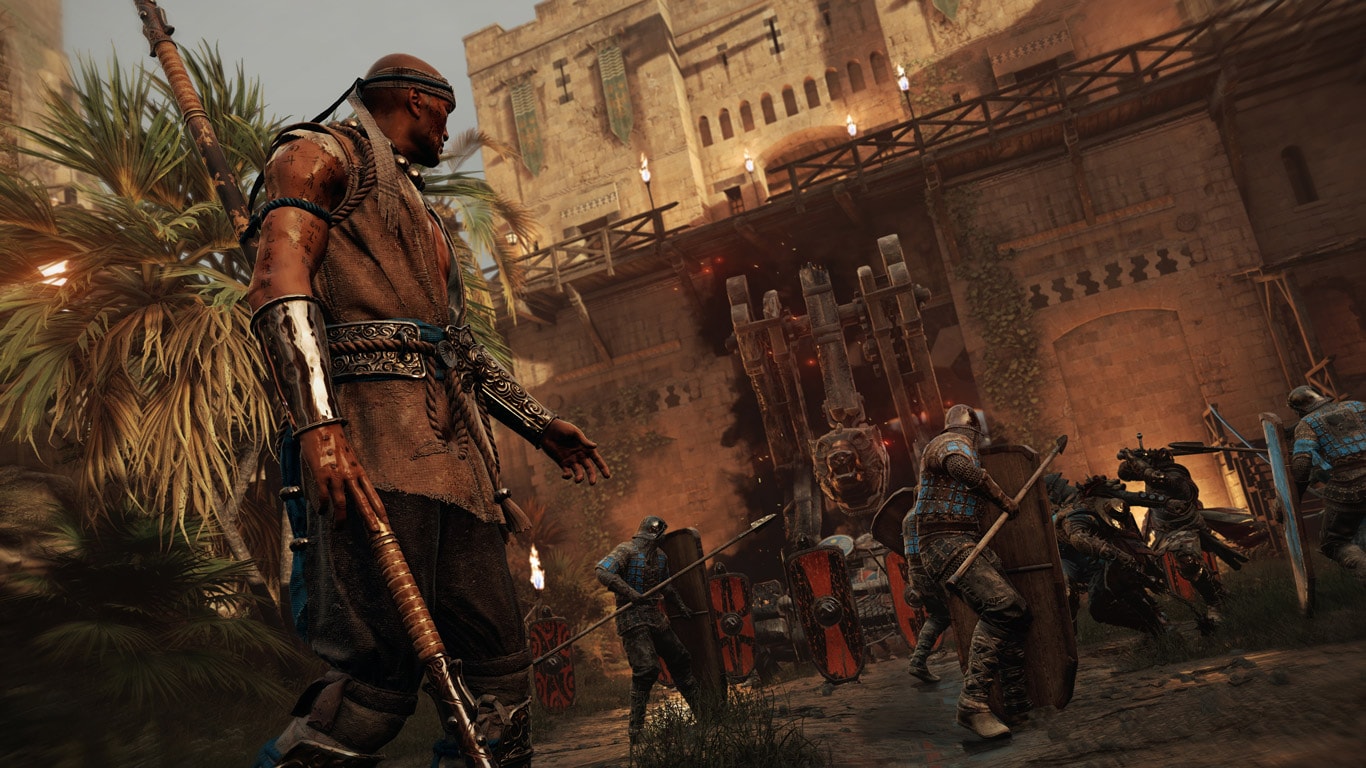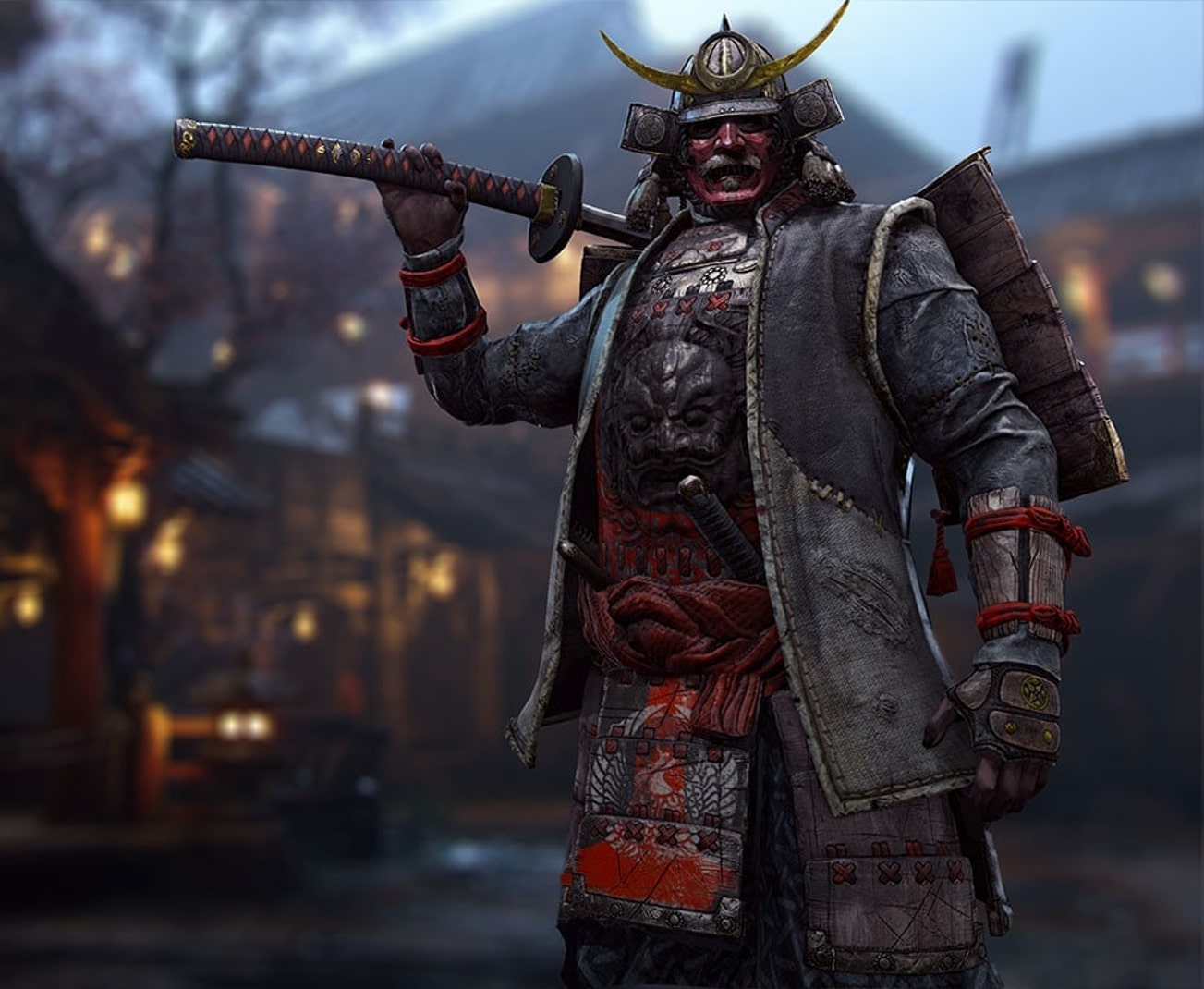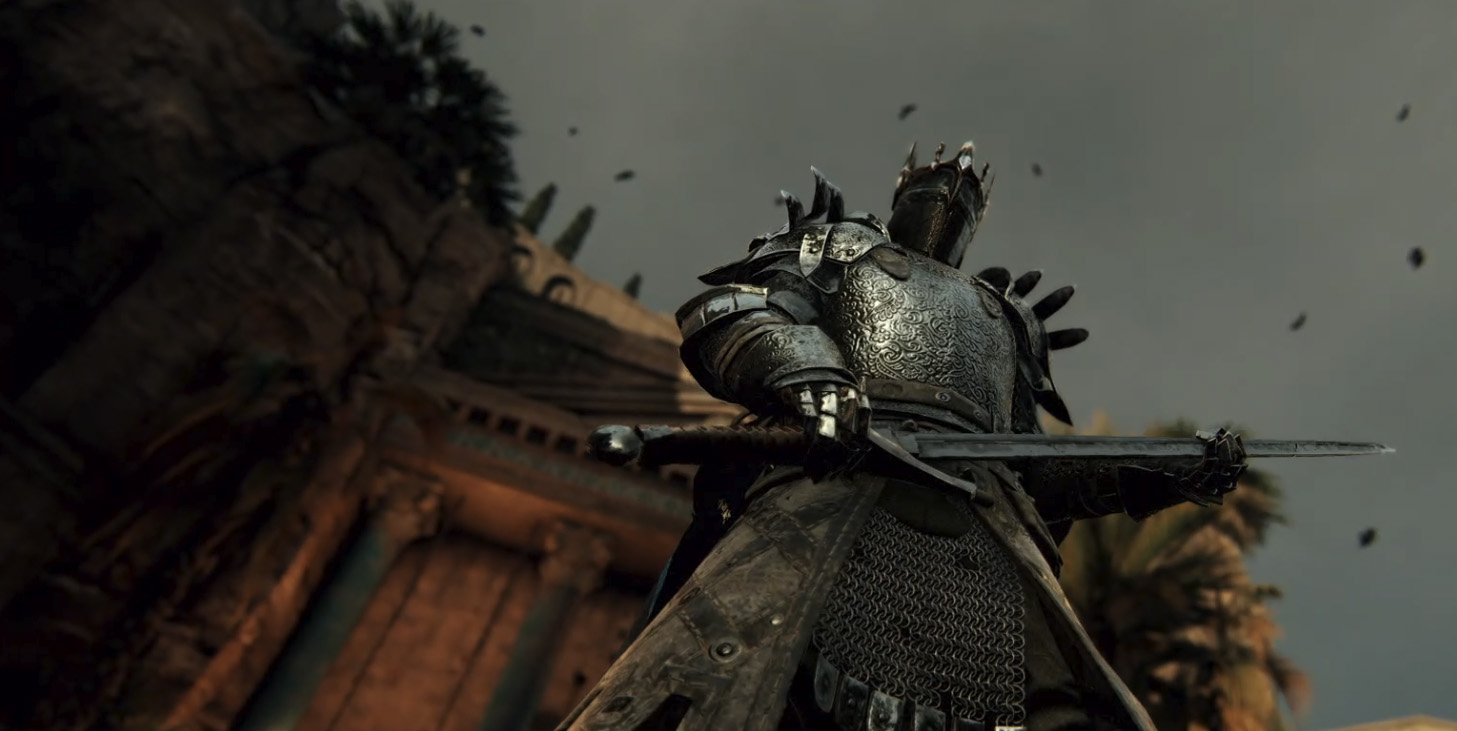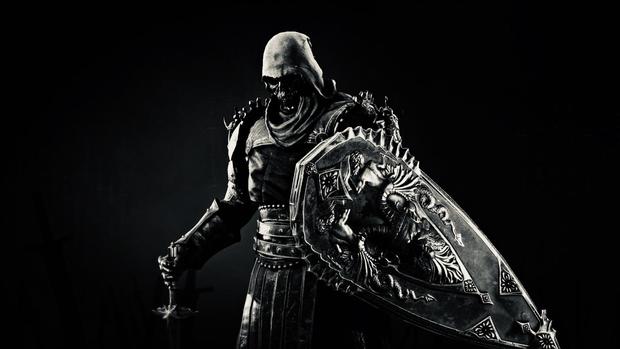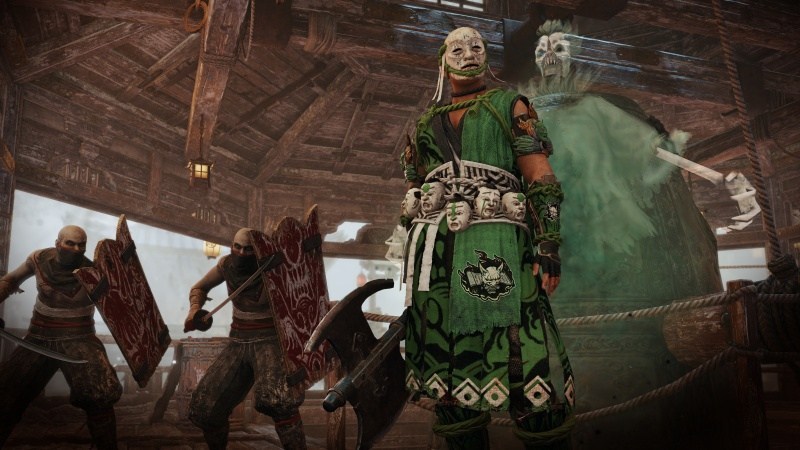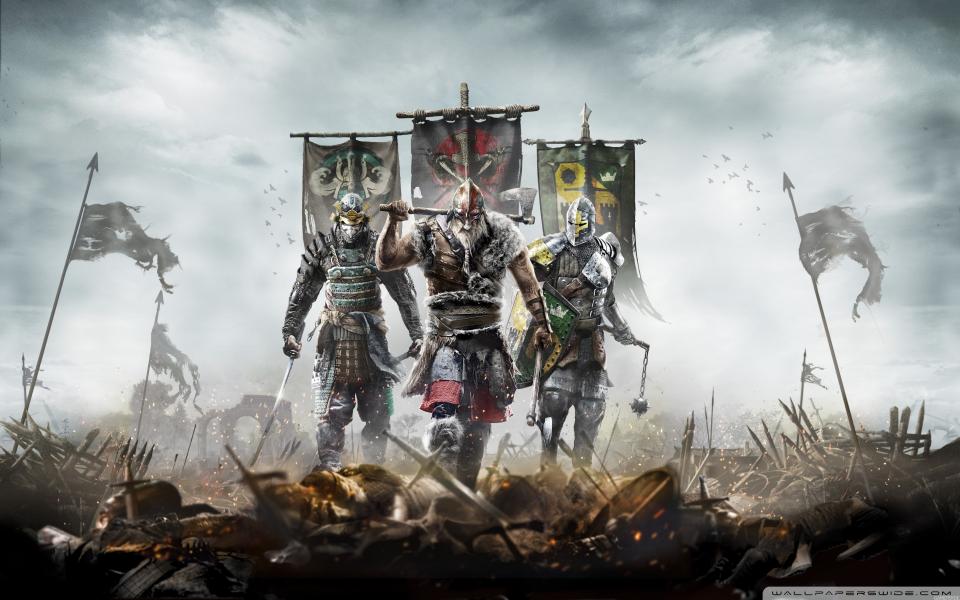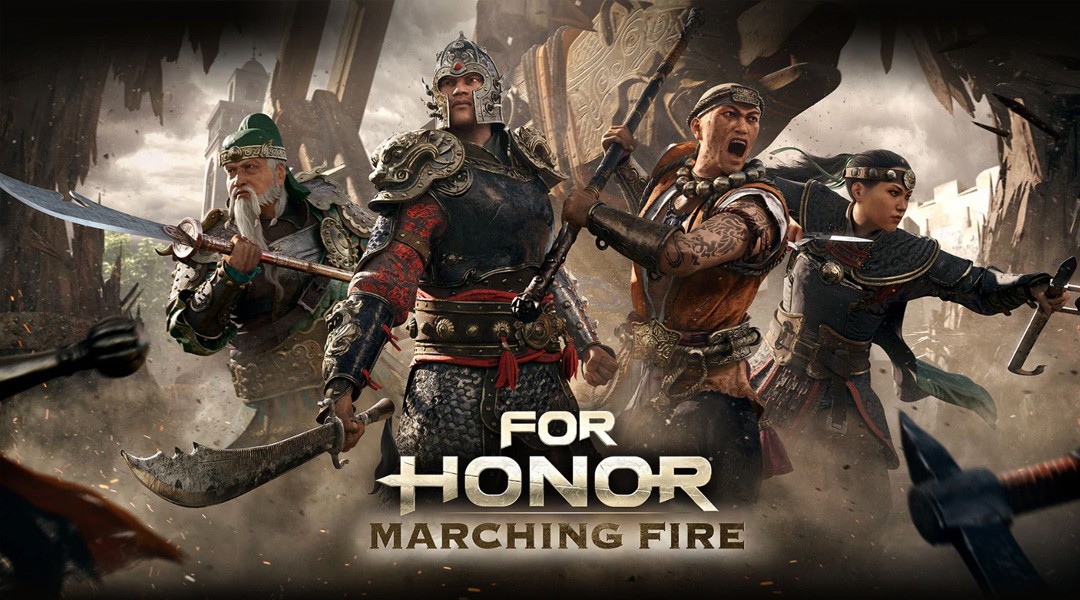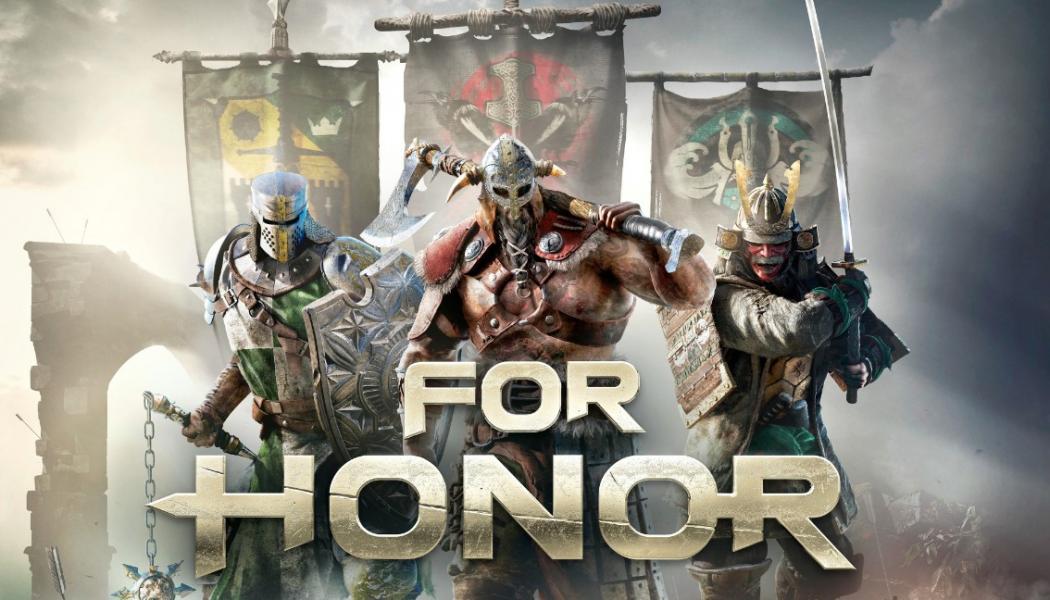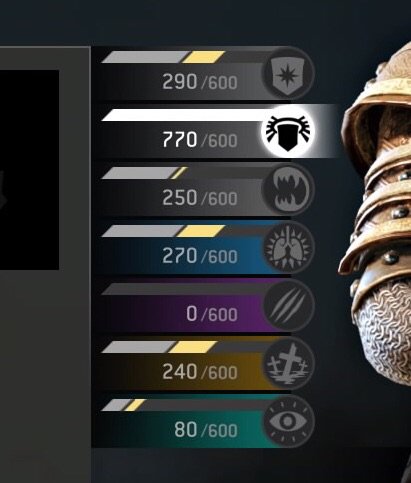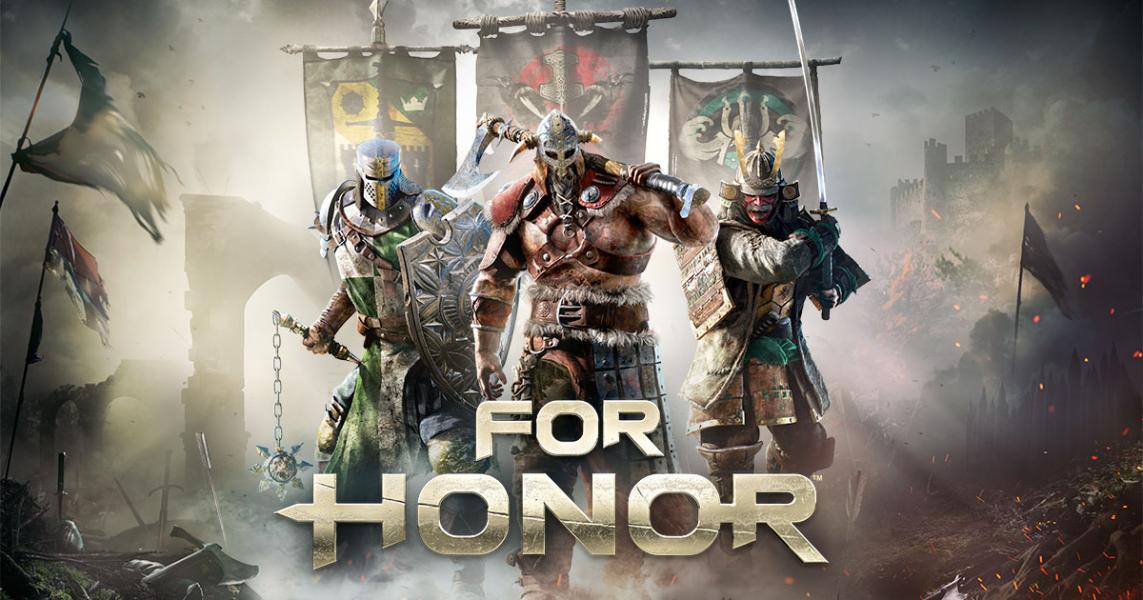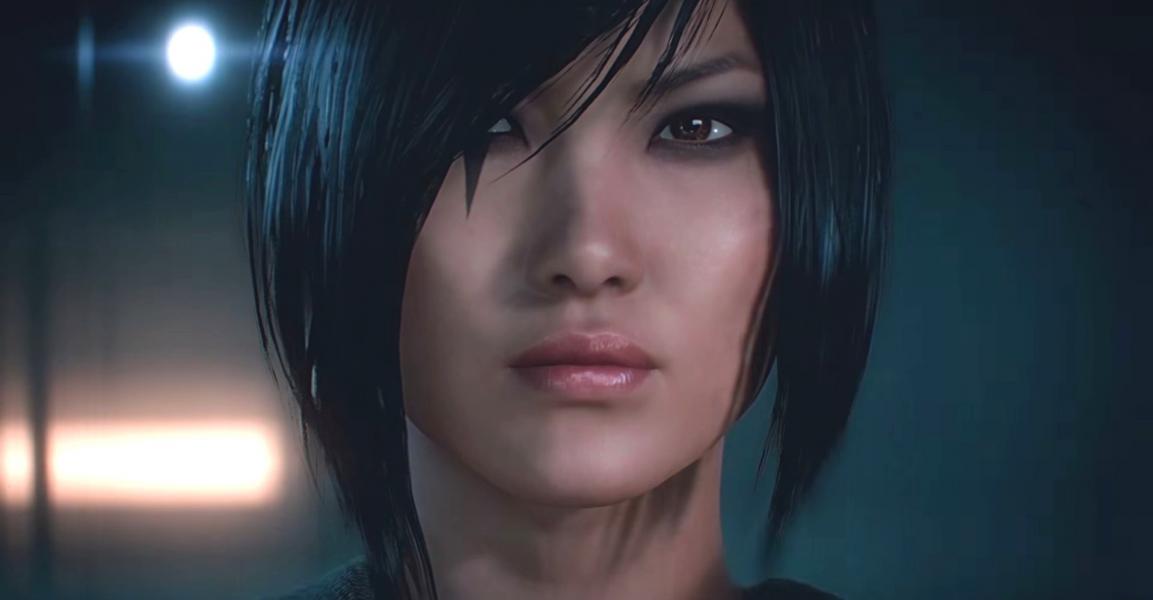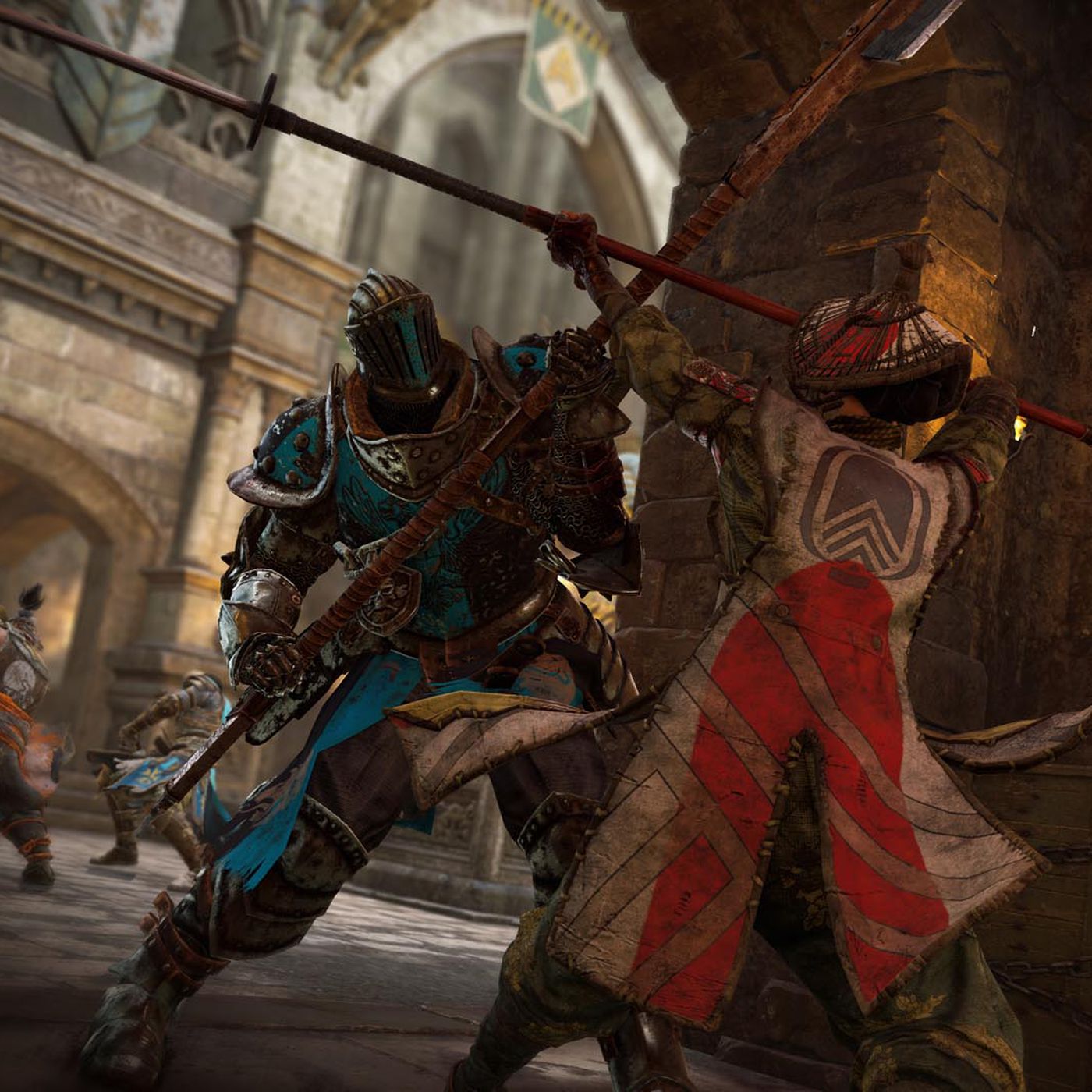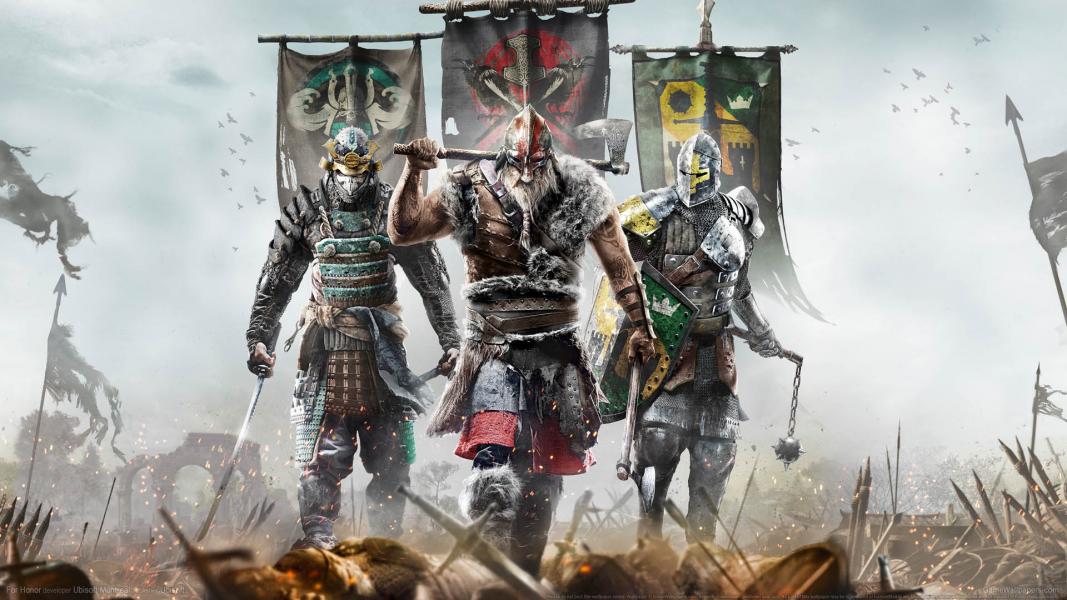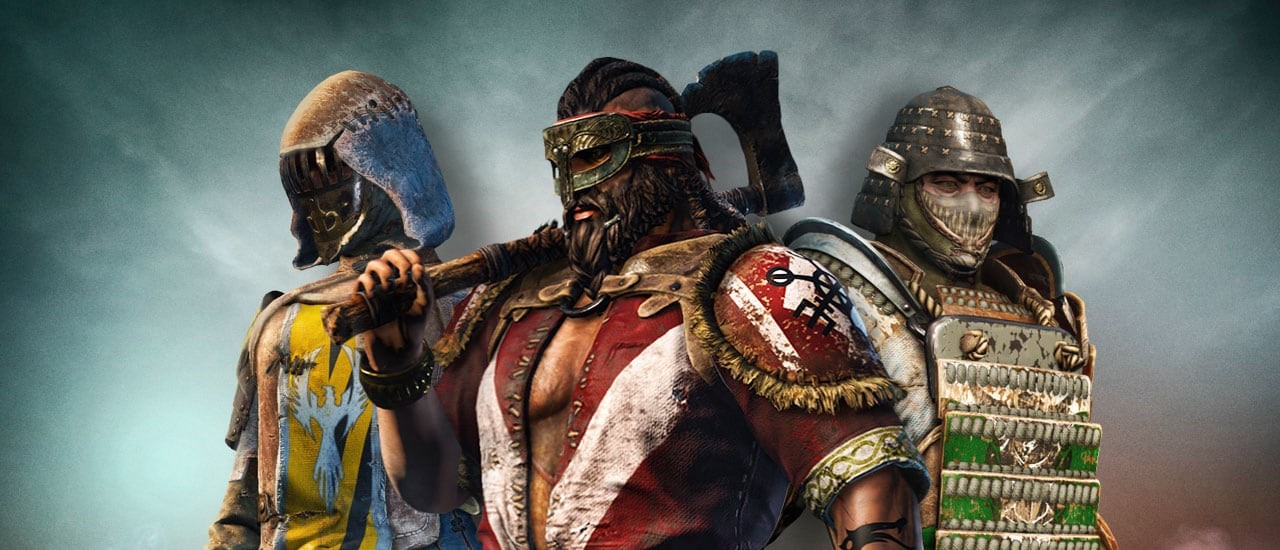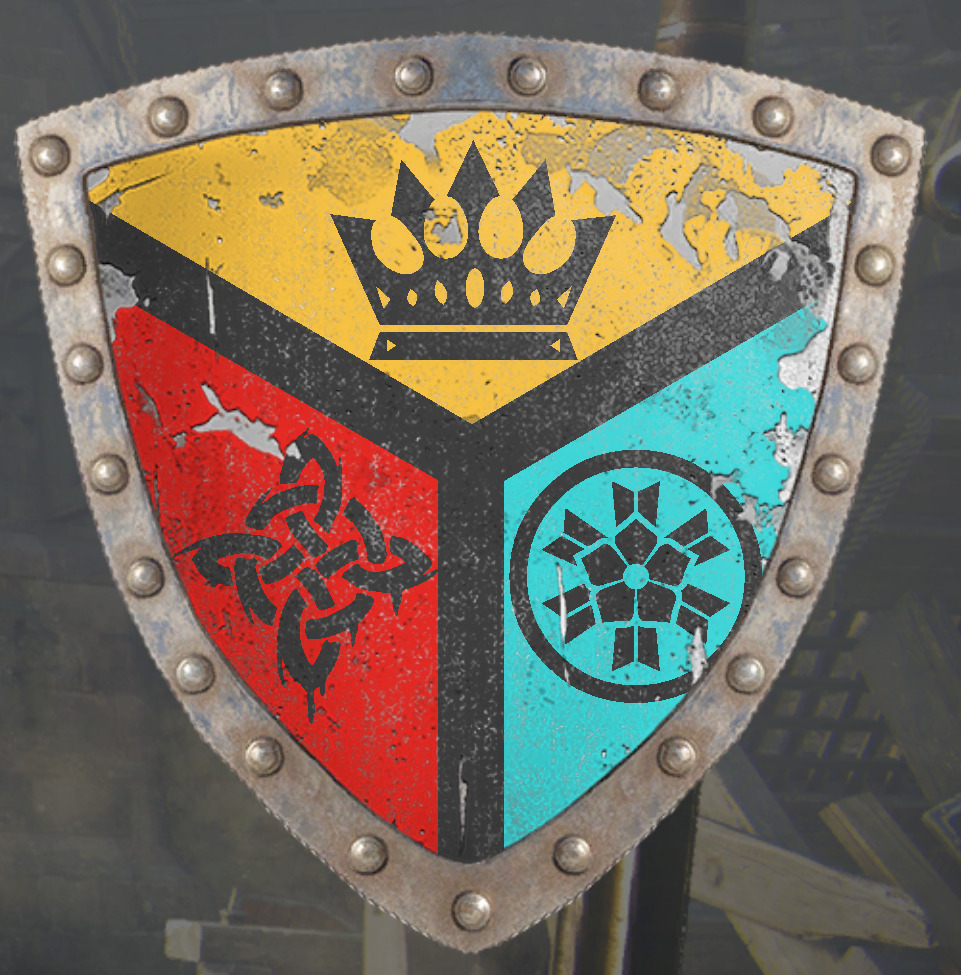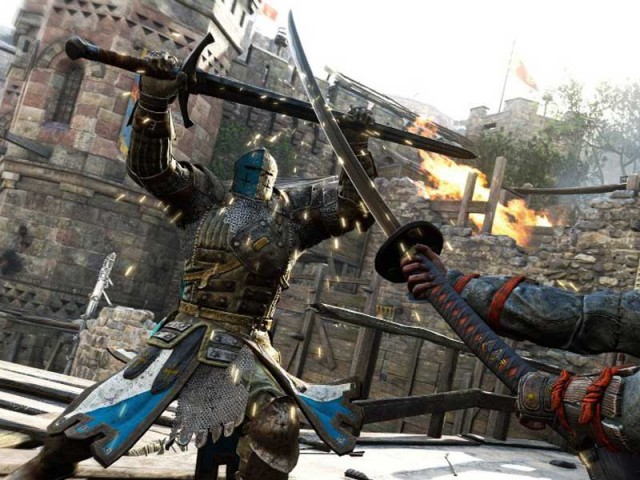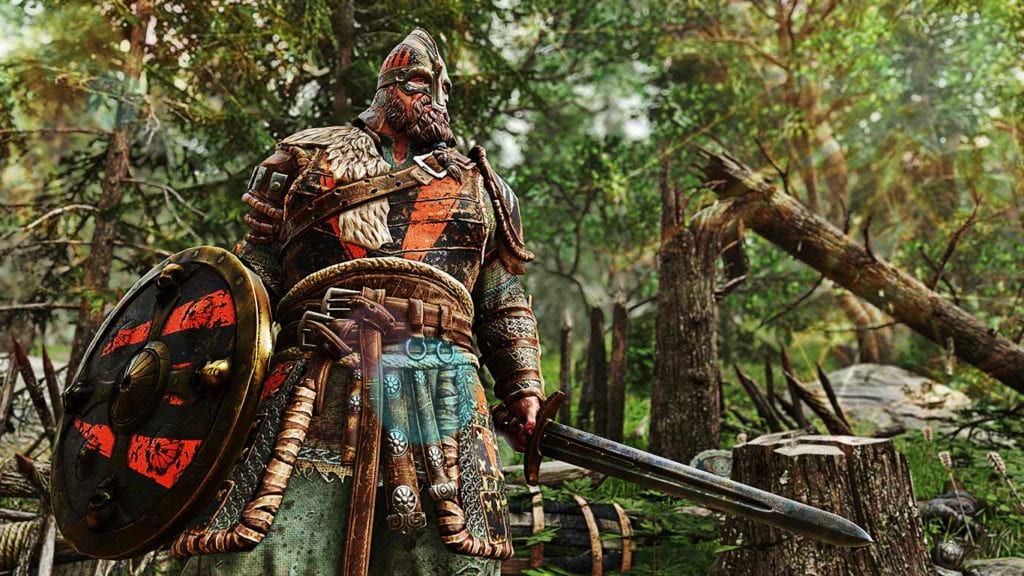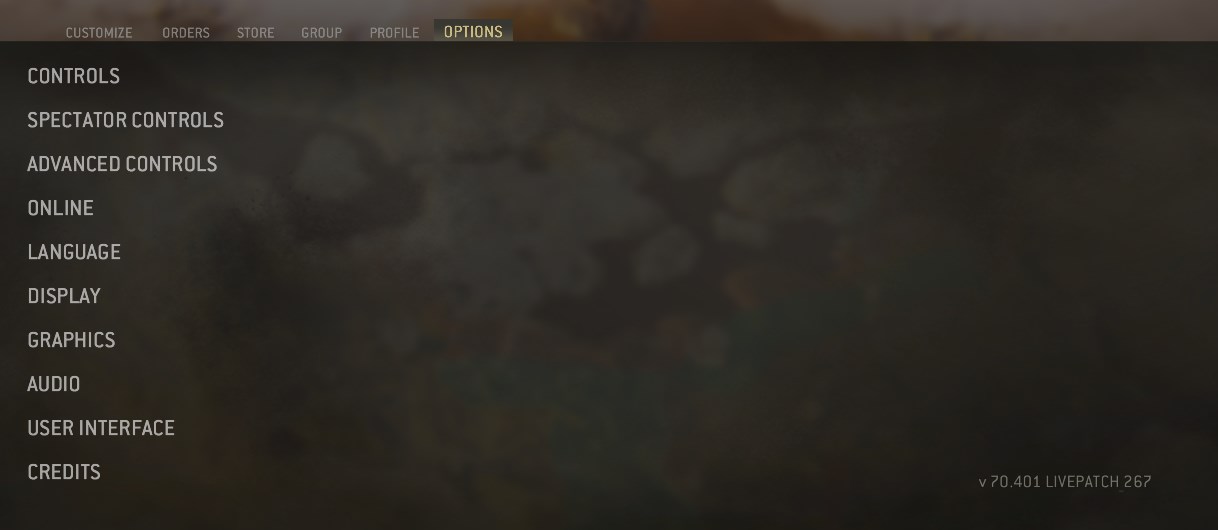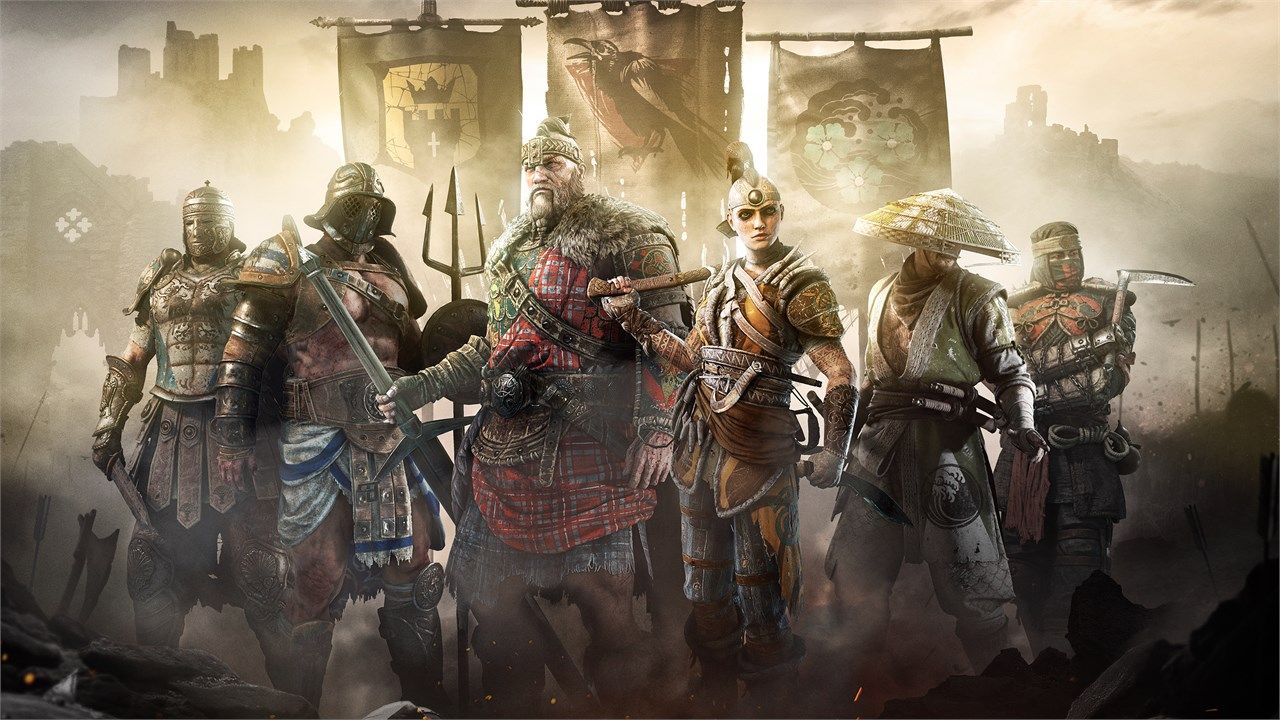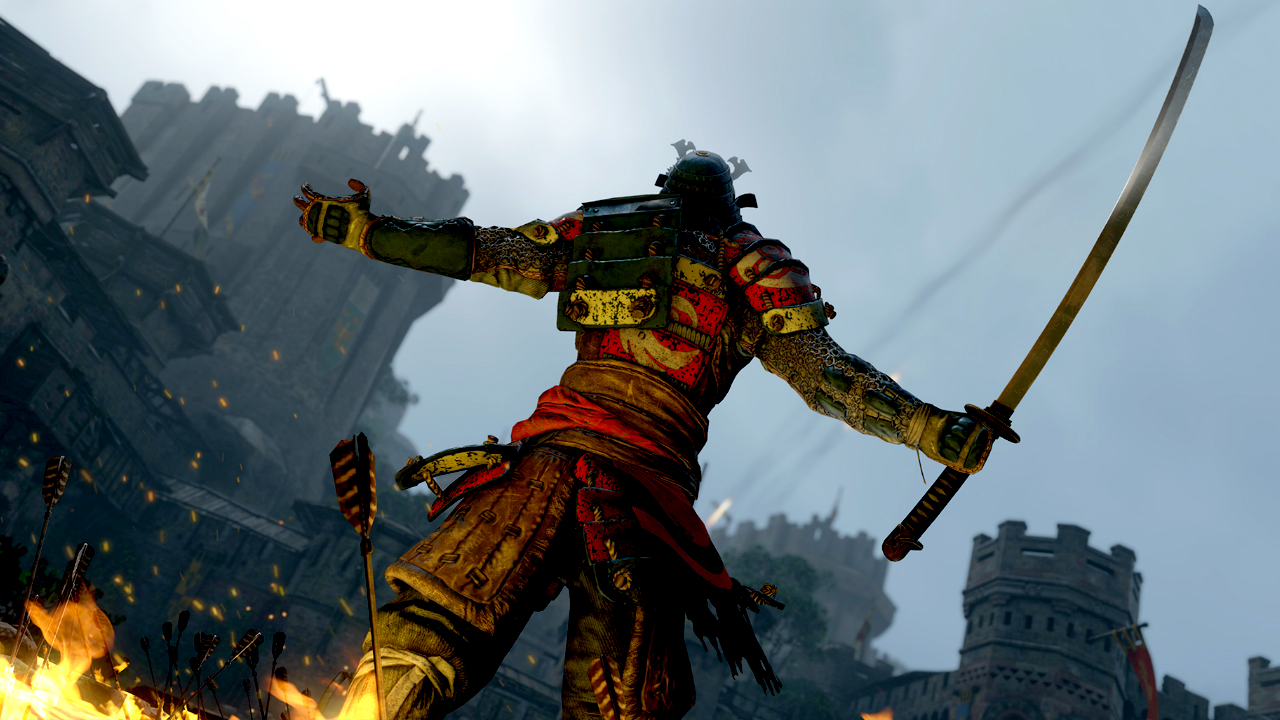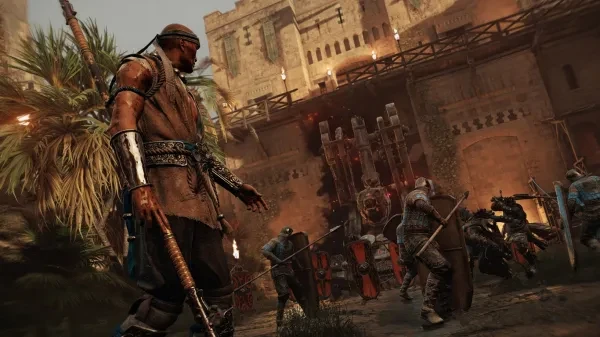
Hello, and welcome. The goal of this article is to be a highly readable presentation of basic property concepts in For Honor, such as blocking, dodging, etc. It draws heavily on my personal experience and research of the game, but even more so on the vast quantity of research and knowledge that is the For Honor Information Hub.
This is designed for new and experienced players looking to understand the nuances of how For Honor’s combat works (I’m over Reputation 500 at the time of writing this and I still learned several things while researching for it).
The average player, whether they’ve got tens or hundreds of reps, is unaware of a few very important concepts found in this list (I can’t tell you how many times I still see people asking what an Option Select (OS) is.)
This article aims to improve general awareness of very basic but not commonly known information, especially in the enduring wake of the Core Combat Update which has forced many players to completely re-evaluate their approach to how defense functions in this game.
Table of Contents:
- Block
- Countering Guard Breaks
- Feints
- Unblockables
- Dodges and I-Frames
- Hyper Armor and Super Armor
- Other Status Effects
- Bleed
- Stun
- Knockback
- Knockdown
- Reaction Versus Prediction
- Additional Resources
Block
Blocking is the simplest, most straightforward mechanic in For Honor, yet it has some hidden complexity that most players don’t fully grasp. For example, there are multiple different types of blocks, and each has a different interaction with the attack it is countering. Additionally, not all blocks are created equal thanks to the situation and context in which they can be employed. Let’s get into it.
First, there are a few results that can take place from a block interaction:
- The attack “bounces”
- The attack is blocked, and the attacker is put into block recovery, preventing them from continuing their chain and in most cases resetting the fight to neutral.
- The attack “slides”
- The attack is blocked, but the attacker is not put in block recovery and can continue their chain.
- I made up the term “sliding” because I wasn’t able to find a better word for the opposite of bouncing. If you know the right word for this, please tell me so I can fix this.
- The attack is blocked, but the attacker is not put in block recovery and can continue their chain.
Next, there are a few different properties that a blockable attack can have:
- Basic (“Unenhanced”)
- The attack has no special properties against blocking. It will slide against Inferior Blocks and Deflects, but bounce against Standard and Superior Blocks.
- Examples of attacks with a Basic property would be the vast majority of light attacks across all characters in For Honor.
- Enhanced
- The attack essentially functions just like a Basic one, but will now slide against Standard Block, meaning it requires a Superior Block to be bounced.
- Examples of attacks with the Enhanced property would be every single heavy attack across all characters in For Honor (minus Zhanhu’s heavy dodge attack), as well as the light attacks of a few characters such as Jormungandr and Shugoki.
- Zone Attack
- The attack slides against all forms of block, including Superior block, meaning any attacks with the Zone Attack property are completely impossible to bounce by any means available in For Honor.
- Examples of attacks with the Zone Attack property would be, shockingly, every single blockable Zone Attack across all characters in For Honor (minus Peacekeeper’s).
- It’s important to note that a lot of Superior Block options have a follow-up if they are triggered, meaning even though your zone attack won’t be bounced, you may still be punished for getting blocked.
- For example, if a Conqueror is in Fullblock Stance and you hit him with a Zhanhu zone attack, he’ll still be able to block the attack and then smack you with a flail uppercut that you can do nothing about. So don’t abuse the Zone Attack property.
So, what are the different types of blocks?
- Inferior Block (“inf block”)
- An inferior block is the weakest form of block. When you inf block something (which is done by moving your guard in the direction of an incoming attack), it will always slide, whether the attack is enhanced or not.
- Example:
- Every character in the game, with no exception, enters a state of complete inferior block upon becoming Exhausted (or OOS (Out of Stamina)).
- Standard Block
- A standard block is, as the name implies, the most common form of block. When you standard block (which is done by moving your guard in the direction of an incoming attack), all unenhanced attacks will bounce.
- Example:
- This is the standard blocking strength of every character when they have stamina.
- Reflex Guard is a variation on this type of block in which the guard decays and needs to be refreshed by pointing your guard in that direction after it fades, unlike Static Guard in which your guard stays active in the direction you point it in until you change it or you unlock/die. Reflex guard lasts 1000 ms before needing to be refreshed.
- Example:
- Every assassin character and Shaolin has Reflex Guard. All other characters have Static Guard.
- Each character has a default guard direction, meaning the direction their guard automatically begins in when they enter guard mode. However, if you are using a mouse and keyboard, the game will remember the guard direction you last ended in when you enter it again. Some examples:
- Orochi’s default guard direction is top.
- Warden’s default guard direction is right.
- Some characters can change their guard direction by dodging in that direction instead of the usual method. This is not to be confused with a Deflect, which we will get into later.
- Superior Block (“sup block”)
- A superior block is the strongest form of block. When you sup block something (which is triggered in various ways by various (and not all) characters), the attack will always bounce, even if it is enhanced. The only attacks that won’t bounce are attacks with the Zone Attack property.
- Example:
- Conqueror, the knight character wielding a ball and chain, has numerous sup block options, more than any other character in the game. For example, his heavy attacks (and dodges, and zone attack, and all-guard stance) have a sup block property during the startup. This means that if he throws a heavy attack just before an attack strikes him, and that attack doesn’t have the zone property, that incoming attack will bounce off before his heavy in turn connects with the opponent.
- Some characters’ dodges and dodge attacks have the Superior Block property (FE Valkyrie, Kensei and Zhanhu). These are also not to be confused with Deflects, which we will now move onto briefly. Deflects will be more detailed in the “Dodge and I-Frames” section.
- One variation of sup blocks are “Crushing Counters” (or CCs). They function pretty much the same, except that the move that has a sup block property gains additional properties when the sup block is triggered. For example, Warden’s top light is a CC because when its sup block window is struck, it becomes unblockable and deals extra damage, as well as confirming a follow-up light.
- Deflect
- Deflects are a unique cross between dodge attacks and blocks. The game considers them an Inferior Block, so they won’t bounce anything and you can’t use them against Unblockables, but they are triggered by using a dodge input just before impact, similar to a parry but with a dodge input instead of a heavy input, and with an often much tighter window. We will explain deflects more in the “Dodge and I-Frames” section, where this information will be repeated to introduce it in both places.
Countering Guard Breaks
Guard breaks (or GBs) are a fairly straightforward mechanic. They consist of “breaking the opponent’s guard”, opening them up to attack with the press of a button. They are also shut down, however, with the reactive press of a button, thus invalidating them as any form of offense on their own.
So when are GBs actually dangerous? GBs function offensively and defensively, in very different ways:
- Offensive
- GBs are useful as a way to open up an opponent in certain soft and hard feint options. For example, Lawbringer can hard feint his side heavy finishers and then immediately go for a guard break, catching any opponent who was attempting to parry or dodge his feinted attack.
- What are hard and soft feints?
- A hard feint is when you feint an attack by giving a feint input, returning yourself to neutral from which you can access other options (such as a GB, in the Lawbringer’s case).
- A soft feint is when you are able to cancel one attack directly into another without ever needing to give a feint input. For example, Shaman can give a light input during the startup of one of her neutral heavies and the attack will immediately transform from a heavy into a bleed stab from the direction of her choice.
- Defensive
- GBs are also useful as a way to punish opponents who expose themselves and enter a state of GB Vulnerability, or GB Vuln. There are many ways for an opponent to do this, such as whiffing an attack or dodging, and we will now explain the different states a player can be in when it comes to GB Vuln.
- The Three States of Guard Break Vulnerability
- Standard
- This is the normal state of a player in For Honor. You can attempt to GB them, but they are free to counter GB as well, making it pretty useless to attempt GBs against people in this state unless you’re setting something up for a teammate.
- Vulnerable
- If a player is in this state, and they are struck with a GB, they cannot counter GB. This is the optimal time to go for GBs. Common examples of players in GB Vuln state are:
- Recoveries
- After your opponent throws an attack, especially if it whiffs, they are in GB Vuln during the recovery. The recovery window varies depending on the attack, whether it connected, and how it connected. For example, if you bounce an attack by blocking it, you put your opponent in recovery long enough that an ally of yours can get a confirmed GB.
- Dodges
- During a dodge, you are in a state of recovery in which you cannot counter GB.
- Startups
- Every neutral heavy attack in For Honor puts its user in at least 433 ms of GB Vuln at the very beginning. This is why when an opponent can be GBd out of a heavy attack meant to be a parry for an attack that is no longer coming at them.
- Recoveries
- If a player is in this state, and they are struck with a GB, they cannot counter GB. This is the optimal time to go for GBs. Common examples of players in GB Vuln state are:
- Invulnerable
- If a player is GB Invuln, and you try to GB them, you will bounce off of them and be put in 1000 ms of recovery. Do not attempt to GB people who are in this state, if that wasn’t obvious already. The most common example of GB Invuln is the latter portion of most attacks. For example, if you try to GB someone who is in the middle or at the end of an attack, and not at the very beginning, your GB will bounce off.
- Standard
Unblockables
Unblockables make that entire section about Blocking and all its intricacies completely irrelevant. Consider the Unblockable property as the step above the Zone Attack property: You just straight up can’t block it at all, can’t make it bounce or slide no matter what you do, whether you use a Standard Block or a Deflect.
This, obviously, makes Unblockables a huge part of how For Honor works, as without them, a character almost always becomes very difficult to find consistent success attacking with. Unblockables force an actual reaction that involves risk from your opponent, unlike the Standard and even Inferior Block that every character has easy access to. Many Superior Blocks are extremely safe as well (such as Valkyrie’s backdodge Fullblock and over half of Conqueror’s entire kit), so having an offensively-accessible Unblockable at your disposal (which every character with the exception of Peacekeeper (and technically Nuxia) has at this point) is very important.
Unblockables come in one of three varieties:
- Standard
- This attack is unblockable, comes from a direction, and can therefore be parried.
- Bash
- This attack is unblockable, but doesn’t come from any direction, meaning it cannot be parried.
- Trap
- This attack type is only used by one character, the Wu Lin Nuxia. This attack is unblockable, comes from a direction, but cannot be parried. However, if the opponent does not block or parry the attack, the trap misses.
Unblockables are countered in a variety of ways, none of them completely risk-free if your opponent knows what to do and can read (or predict), with very few exceptions.
There are four ways to beat an Unblockable attack:
- Parrying (Unless it’s a bash, or trap)
- Parries can be performed on any blockable attack as well, not just unblockables. When you parry an incoming attack, you essentially do a very special block that puts you and your opponent in an 800 ms animation that leaves them staggered (for 900 ms if it was a light attack you parried, 600 ms if it was a heavy attack parry). During that stagger, you are confirmed a punish, or guaranteed damage, and some characters even have special parry follow-ups (such as Warlord and Nuxia).
- If your opponent is OOS or you are in Revenge, parries will knock them to the ground, confirming an even larger punish.
- Punishes vary from character to character, and you can look up specific punishes by checking the Information Hub Max Punishes Reference page.
- Parries are performed in one of two ways:
- Standard Parry: Using a heavy input in the direction of the incoming attack up to 300 ms and down to 100 ms before impact. This is the standard parry the game teaches you to use by default.
- Zone Option Select Parry: Using a zone attack input in the direction of the incoming attack up to 300 ms and down to 100 ms before impact. This is but one of many forms of OS in For Honor, and the game itself doesn’t teach you any of them.
- Why would you use one of those methods over the other? It depends entirely on the context, and which character you are using. For most characters, you want to use both unpredictably as there are different methods your opponent has of dealing with each kind of parry (standard or OS), because different things happen if the Unblockable attack gets feinted and you therefore don’t parry it:
- If you used a standard parry, your character just throws a heavy attack, leaving you temporarily open to attack during the slow startup of most heavy attacks.
- If you used a Zone OS parry, your character performs their zone attack. The number of feint options a Zone OS covers is the primary factor that determines how useful it is, and each character has their own. Let’s look at one of the best, and one of the worst:
- Gladiator’s zone attack has only 100 ms GB vulnerability (vuln), is an unblockable bash, and confirms damage. The second half, a heavy attack swing, is feintable and therefore makes this option select completely unpunishable by most characters after dodging, even on a hard read (prediction).
- Nuxia’s zone attack, on the other hand, is tied with Raider’s for having the most GB vuln in the game at 400 ms (unless she soft feints into a trap, extending it to a whopping 500 ms). It is a blockable 1000 ms attack with a relatively pitiful attack hitbox and damage, and only comes from one direction, making it very easy and safe to interrupt with most feint options.
- Parries can be performed on any blockable attack as well, not just unblockables. When you parry an incoming attack, you essentially do a very special block that puts you and your opponent in an 800 ms animation that leaves them staggered (for 900 ms if it was a light attack you parried, 600 ms if it was a heavy attack parry). During that stagger, you are confirmed a punish, or guaranteed damage, and some characters even have special parry follow-ups (such as Warlord and Nuxia).
- Dodging
- Really straightforward counter to an unblockable, performed by using a dodge input to the left, right, or backwards. We’ll explore dodges and I-frames more later.
- You can dodge any attack that doesn’t have the Undodgeable property (which will again be elaborated later).
- Interrupting
- Also very straightforward, interrupting means exactly what it sounds like: hitting your opponent before his unblockable attack hits you. This is often hard to do on reaction, and is usually done by using a simple neutral light attack (or a zone, if it’s fast enough). Especially effective against Nuxia traps.
- Don’t try to interrupt everything, because if the incoming attack also has Hyper Armor (which we’ll elaborate on later), your attack won’t interrupt them even if it connects first.
- Additionally, if the opponent thinks you’re going to try interrupting him, he’ll try to feint the attack and then punish your attempt.
- Bulwark Counter
- This is a counterattack option only available to one character, the Knight Black Prior. It is triggered by using a light attack input while in Bulwark Stance (his form of all-guard), and if any attack, blockable, unblockable, or bash, strikes the Black Prior while the counter window is active, he performs his signature Bulwark Counter flip. Bulwark Counter is defeated by a simple Guard Break (or GB), but Black Prior’s easy access to it and its ability to counter literally everything else makes it very potent.
Dodge and I-Frames
We’ve touched on dodges and I-frames (invulnerability frames) in the previous sections, but here is where we go a little more in-depth as to how they work.
First, let’s explain what a dodge is. A dodge is essentially making your character move in a quick burst to the left or right, forward or backward. You do this by pressing the dodge input as your movement input is pointed in the desired direction.
Here are some numbers on dodges:
- Side and forward dodges last 633 ms, from input to returning to neutral, with the exception of an additional 300 ms wait required to dodge again.
- Back dodges last 800 ms instead of 633 ms, but generate space between you and your opponent.
- Empty dodges in all directions (dodges that aren’t canceled into a dodge attack or otherwise interrupted) have I-frames lasting from 166 ms into the dodge to 300 ms into the dodge, meaning you are “invulnerable” for a total of 134 ms once 166 ms has elapsed after inputting.
- The last 333 ms of the dodge are just “dodge frames”, meant primarily just to move you further, to stay away from the weapon you’re evading. Attacks do not track you while you have dodge frames active. This is why it’s important to dodge in the direction of the incoming attack, not the direction the opponent’s weapon is going. For example, if you dodge right when a raider is swinging his axe at you from your left, you and the axe are going to end up in the same place and there’s a good chance you’ll still get smacked once your 134 ms of I-frames are over and you’ve misused your dodge frames.
- Forward dodges don’t have any I-frames, and instead only have dodge frames. Dodge frames, however, are all the game needs to let you evade projectiles like crossbows (as silly as it looks).
- During a dodge, you are in a state of “recovery”, meaning you cannot block (for most characters) counter GB (for all characters now, thank heavens) or change guard direction during the 633 ms of the dodge.
- Walls and other environmental pieces will cancel your I-frames if you dodge into them. For example, if I dodge right when there is a wall directly to my right, my character stays in place and has a dramatically shorter window of dodge and I-frames, on top of barely moving at all.
- Rolls
- If during a dodge you give another dodge input (facing backwards if in guard mode, any direction if unlocked), your character will perform a dodge roll. This generates a lot more space between you and your opponent but also leaves you vulnerable (you can’t block or parry during the roll, however you are GB invulnerable shortly into the roll and until shortly before the end of the roll, where you are in standard GB state). Use rolls to disengage from fights, and to negate certain mixups (such as Shugoki’s Demon’s Embrace).
- Do not overuse rolls, as they cost a significant amount of stamina, and an increasing number of characters have ways to punish you if they correctly read or in some cases react to your roll.
- With that in mind, it is also possible to convert any side or front dodge into a roll by unlocking and then giving another dodge input. However, this means you are not locked on, so if you are struck while performing an unlocked roll, you will be afflicted with higher hitstun than if you’d been locked on, which can confirm nasty damage for your opponent.
- If during a dodge you give another dodge input (facing backwards if in guard mode, any direction if unlocked), your character will perform a dodge roll. This generates a lot more space between you and your opponent but also leaves you vulnerable (you can’t block or parry during the roll, however you are GB invulnerable shortly into the roll and until shortly before the end of the roll, where you are in standard GB state). Use rolls to disengage from fights, and to negate certain mixups (such as Shugoki’s Demon’s Embrace).
- Dodge attacks:
- Dodge attacks are moves accessed by performing a dodge and then giving an additional input during the dodge. The window to give this input varies from attack to attack, character to character. For example, Kensei and Orochi have relatively enormous windows to delay and time their dodge attacks while Tiandi can only do his on a single timing.
- Dodge attacks can have a lot of different properties, such as being unblockables, bashes, lights or heavies, possessing sup block properties, and even a few that are feintable. Most, however, either can’t be feinted or have significant GB vuln windows if baited.
- Some moves are not accessed by dodges, but still have I-frames during the startup. For example, Nobushi’s Hidden Stance or Highlander’s Celtic Curse during the soft feint.
- Dodge attacks extend I-frames when used, by varying degrees. Some increase your I-frames by a substantial amount (such as Tiandi’s Dragon Dodge or Jiang Jun’s Mighty Backlash), while others in fact shrink your I-frames (such as Tiandi’s Tiger Dodge or Nobushi’s Sidewinder).
- Deflects:
- Again, deflects are a unique cross between dodge attacks and blocks. The game considers them an Inferior Block, so they won’t bounce anything and you can’t use them against Unblockables, but they are triggered by using a dodge input in the direction of the incoming attack just before impact, similar to a parry but with a dodge input instead of a heavy input, and with an often much tighter window.
- Because deflects count as blocks, the game will prioritize your I-frames over your deflect frames. But since you can’t dodge and deflect an attack at the same time, the game prioritizes I-frames, which can make your deflect window very tiny before the I-frames take over. Let’s look at an example:
- A Peacekeeper sees an incoming heavy attack from her right. If she wants to deflect it, she needs to dodge in the direction of the incoming attack up to 66 milliseconds (ms) before impact. 66 milliseconds. Why?
- Basically, dodging gives you I-frames starting 166 ms into the dodge. Deflect frames, however, start 100 ms into the dodge. While deflects have a base active window of 200 ms after the startup, they can only be active for 66 ms before the I-frames kicking in at 166 ms activate and overrule them, meaning you’ll dodge the attack instead of deflecting it.
- Fortunately, unlike parries, deflect windows still function against the last 100 ms of an incoming attack. That means if you parry less than 100 ms before an attack hits you, that’s too late and it’ll hit you anyway, but if you deflect less than 100 ms before the attack hits you, the deflect frames, unlike the parry frames, will still beat the attack, triggering a deflect. Be careful; this doesn’t mean you can initiate a deflect less than 100 ms before impact, because deflects, unlike parries which activate instantly, have a startup of 100 ms.
- So, because of this, the Peacekeeper has to input the dodge between 166 and 100 ms before impact. If she does it too early, she’ll dodge the attack instead because her I-frames overruled her deflect frames. If she does it too late, she’ll just eat the attack.
- There are 2 universal exceptions to the rule of I-frames beating deflect frames:
- Top Attacks
- Since forward dodging gives you no I-frames against normal attacks, this means you get the full 200 ms deflect window without any of it being overruled by I-frames.
- Undodgeables
- Since attacks with the Undodgeable property ignore all I-frames, the I-frames do not overrule your deflect window.
- Top Attacks
- But why do I-frames and deflects interact the way they do? Why do I-frames override deflect frames, making deflects harder to perform on side attacks that ignore no I-frames?
- Remember: Deflects are considered blocks. If deflect windows overrode I-frames, your character would be in a state of inferior block for an entire 200 ms while side dodging, instead of in an i-frame induced “invulnerable” state. This would be extremely problematic when trying to dodge something that isn’t blockable, such as an Unblockable attack or bash. Let’s look at an example of what would happen if deflect windows overruled I-frames instead:
- Let’s say the opponent our Peacekeeper from earlier is fighting decides to throw out a side attack from her right with the Unblockable property. So, she decides she wants to dodge it. However, when she dodges to the right, her deflect windows are active for an entire 200 ms after the 100 ms startup, effectively cancelling out all of her I-frames and causing her to attempt to block (with a deflect) an unblockable attack. She gets hit by the attack, and proceeds to uninstall the game, because all characters with special block properties (yes, this also includes Superior Block-affected dodge attacks) on their dodges are completely incapable of dodging Unblockable attacks.
- So, because we want assassins (almost all the characters with reflex guard) and other characters to be able to dodge without unintentionally trying to block Unblockables, I-frames overrule deflect frames, requiring deflects to be used 66 ms before impact on attacks that ignore no I-frames.
- Remember: Deflects are considered blocks. If deflect windows overrode I-frames, your character would be in a state of inferior block for an entire 200 ms while side dodging, instead of in an i-frame induced “invulnerable” state. This would be extremely problematic when trying to dodge something that isn’t blockable, such as an Unblockable attack or bash. Let’s look at an example of what would happen if deflect windows overruled I-frames instead:
- A Peacekeeper sees an incoming heavy attack from her right. If she wants to deflect it, she needs to dodge in the direction of the incoming attack up to 66 milliseconds (ms) before impact. 66 milliseconds. Why?
- Because deflects count as blocks, the game will prioritize your I-frames over your deflect frames. But since you can’t dodge and deflect an attack at the same time, the game prioritizes I-frames, which can make your deflect window very tiny before the I-frames take over. Let’s look at an example:
- All assassin-class characters and Shaolin have deflect windows on their dodges.
- While Standard and Inferior Block do not have any follow-ups (with the exception of Black Prior), and most, but not all Superior ones have a follow-up, every single deflect in For Honor has at least one follow-up. These follow-ups are the main reason it’s even worth the trouble of going for a deflect in the first place, as it is easily the most risky and difficult block to pull off.
- Examples:
- Arguably the best deflect in the game, Berserker can follow-up a successful deflect with a special guard break (GB) that ignores all GB invulnerability (invuln) frames.
- Arguably the worst deflect in the game, Nuxia can follow-up a successful deflect with a blockable, unenhanced light attack that starts chains and deals 30 damage.
- Again, deflects are a unique cross between dodge attacks and blocks. The game considers them an Inferior Block, so they won’t bounce anything and you can’t use them against Unblockables, but they are triggered by using a dodge input in the direction of the incoming attack just before impact, similar to a parry but with a dodge input instead of a heavy input, and with an often much tighter window.
Hyper Armor and Super Armor
In the game, Hyper Armor and Super Armor (or as I’ll be calling them, HA and SA) is called Uninterruptible Stance, but that’s a mouthful and I’m not typing that more than once to explain it.
With that out of the way, H/SA is a very simple mechanic: it just means you can’t be interrupted from or “poked out of” whatever it’s applying to. For example, if I throw a heavy attack that has HA, and my opponent hits me with a light attack while I’m swinging, he’ll hit me and deal damage, but my attack won’t be interrupted and stop coming like it normally would. Instead, it’ll just power through his poke and hit him, resulting in a “trade”. A trade is where both players deal damage to each other almost simultaneously, and in this case, I most likely won the trade because I hit my opponent with a heavy attack while he only nicked me with a light attack.
“SA” is basically the same thing as HA, but in the context of For Honor, SA is also able to beat bashes and other things that normally defeat regular HA. For example, let’s say I throw that same heavy attack from earlier, but instead of trying to interrupt with a light attack, my opponent bashes me before I hit him. This will knock me out of my HA heavy, unless I have SA, in which case he’ll just bump into me and eat the attack unless his guard comes up in time, which it probably won’t unless he’s playing Black Prior or Lawbringer.
HA is much more common than SA, as almost no character’s kit specifically includes SA and HA is a major piece of numerous kits such as Berserker and Shugoki. SA mainly comes into play when Revenge mode is involved. Thus, we will primarily focus on HA.
HA has two main uses, one offensive and one defensive.
- Offensive
- HA can be used to protect certain mixups and chains from being negated by a simple poke interruption. For example, trying to stop a Berserker from using his finisher feint options by poking him out of his chain is futile and stupid. The guy has HA on almost everything; don’t try it.
- HA is also useful in chaotic teamfights, where your allies’ and your enemies’ weapons swinging through the air might hit you and stop you from attacking unless you have the appropriate HA.
- Defensive
- HA can be used to trade with attacks instead of defending from them. The best current example of this is Shugoki’s neutral light attacks, whose HA lets him counter almost every attack slower than a light from his opponent simply by throwing a light on reaction. If his attack lands first, good for him, but even if the opponent’s attack lands first, Shugoki’s light won’t be stopped and he’ll hit the opponent, knocking them out of their chain and starting his own with a trade.
Other Effects
Here’s a number of other effects moves in For Honor can apply. None of them is complicated enough to deserve its own section, but they bear mentioning regardless.
Bleed
Bleed functions similarly to the way poison does in a lot of games. It deals damage over time, instead of damage immediately. For example, if I am struck with an attack that deals 2 direct damage and 20 bleed, I will take 2 damage immediately and then suffer 20 additional damage over the next few seconds in ticks.
But why would you want to bleed someone instead of just directly hurting them? There’s a specific situation where bleed is always a good idea, and an advantage it has over other attacks:
- If the target has a temporary shield, such as the ones granted by Revenge mode and the Phalanx feat, you can apply all the bleed you like and once the shield fades away, the bleed stops eating into their shield and starts eating into their remaining health instead. Make sure you’re using bleed attacks that stack bleed (for example, don’t use Nobushi’s zone attack’s bleed for this purpose). Additionally, bleed feeds no revenge because revenge only cares about direct damage, not damage over time.
Outside of that, however, it depends on the character you’re playing. There are several characters with the ability to inflict bleed, whether they’re using feats (like Sharpen Blade) to apply it or their own moves, but there are three characters in particular whose kits revolve around the status effect: Peacekeeper, Nobushi, and Shaman. All three of these characters’ bleed stacks (with the exception of Nobushi’s zone attack’s second strike), and each character benefits uniquely from their opponent bleeding.
Peacekeeper
- If Peacekeeper’s target is bleeding, all of her lights become Enhanced (including her soft feint dagger cancel).
- Peacekeeper can access bleed in one of four ways:
- Deflect follow-up
- (During any heavy) soft feint dagger cancel
- GB follow-up
- Any successful heavy follow-up
Shaman
- If Shaman’s target is bleeding, all of her successful attacks heal her for 4 HP. Additionally, her bash turns into a devastating bite that deals 35 damage and heals her for 15 HP.
- Keep in mind that the target’s existing bleed is cured upon landing the bash (not when the bite occurs).
- Shaman can access bleed in one of three ways:
- Deflect follow-up (Raven’s Beak)
- (During any neutral heavy startup, or after the second hit of a zone) soft feint dagger cancel (Raven’s Bile)
- After any chain finisher (Raven’s Claw)
Nobushi
- If Nobushi’s target is bleeding, her attack damage is increased by 20%.
- Nobushi can access bleed in one of four ways:
- Light finishers (confirmed follow-up light only, accessed either from the Poke the Nest chain or Hidden Stance)
- Backstep light (Viper’s Retreat)
- Dodge light (Cobra Strike)
- Zone attack (Second strike only, bleed does not stack)
Stun
Stun is even more simple than bleed. All it does is make your target’s screen flash, and hide their guard UI for a short time, depending on the stun. For example, Shugoki’s Headbutt stuns for a useless 400 ms while Lawbringer’s top heavies all stun for a potent 1500 ms.
Stun is mostly useful if you have a fast follow-up attack and you want to make it harder for your opponent to respond accordingly. Most stun in For Honor is pretty underwhelming and doesn’t really do much besides adding a cool effect to certain punishes, with the exception being Lawbringer’s top heavies as they are hard hitting and can really mess his target up in a gank scenario, and make it harder to block his fast or enhanced follow-up lights.
Knockback
As a general rule, attacks in For Honor have some degree of knockback. There are a few that knock the target in different directions, such as Jormungandr and Nuxia’s heavy finishers, but for the most part, every attack and counter attack pushes you forward and your opponent backward. GBs are, for most characters, a great source of knockback when your priority is distance and direction over immediate damage, but other moves can also carry your enemies a great distance (such as Warlord’s Crashing Charge and Lawbringer’s Impaling Charge).
However, there’s an element of knockback that’s very important to know: not all knockback will wallsplat the opponent, and not all knockback will ledge the opponent. As a rule of thumb, lights do not ledge opponents (with some exceptions such as Shugoki’s neutral lights and Kensei’s Helmsplitter attack), while heavies always ledge.
Wallsplatting (which consists of making the opponent collide with a wall or another player, causing 1200 ms of stagger), on the other hand, is only done by a few bashes and attacks, such as Valkyrie’s side light finishers and Jiang Jun’s choke. If you want wallsplats, and you aren’t playing one of the few characters with special access and punishes for them, just use a simple GB throw.
Knockdown (Unbalance)
“Knockdown” refers to what the game calls “Unbalance”, similar to how the game calls “Hyper Armor” “Uninterruptible Stance”. It consists of knocking your opponent to the ground, leaving them defenseless for 2500 ms in most cases.
The main way to access a Knockdown on your opponent is to GB throw or parry them while either they are OOS or you are in Revenge mode. This will incur the standard 2500 ms of knockdown before they stand up and can defend themselves again. Each character has their own specific max punishes for these scenarios, and I again direct you to the Information Hub Max Punishes page for more details about each character in every scenario.
However, some characters, like with bleed, have a kit that revolves heavily around knocking down the opponent, while others just include it as a feature of a few of their attacks. For example, Jormungandr’s playstyle focuses on draining the target’s stamina so he can knock them down and land his dedicated knockdown punish, Hamarr Slam, while Valkyrie just has one move, Spear Sweep, that functions more as a finisher option than an end-goal.
Reaction Versus Prediction
This is one of the most important aspects of defense in all of For Honor, as it governs how effective any attack is, and how you should respond to any action taken or soon to be taken by your opponent.
A reaction is done in response to something that has already happened or is already underway. For example, if the opponent throws a heavy attack, and you then move your guard to block it after seeing the indicator and animation, then you have just performed a reaction.
A prediction is done in anticipation of something that is going to happen, based on a read. For example, if you input a left heavy attack at the point in your opponent’s chain where they can throw a 400 ms light from that direction, in an attempt to parry it before you see the indicator, you have just performed a prediction, whether you were right or not.
If something is “reactable”, you can beat it after seeing it coming. If something is “unreactable”, you need to anticipate it before it starts coming to beat it. This applies to all attacks, soft feints, and other mixups. As a general rule, if a move is reactable, and cannot be feinted into something unreactable or given variable timing, it’s not offensively viable. Let’s look at some examples.
- Reactable Attack Examples
- Highlander’s neutral top heavy is reactable. You can see the attack coming, and then defend yourself, in several different ways.
- Shugoki’s uncharged Demon’s Embrace soft feint is reactable. You can see his animation change and then react accordingly.
- Unreactable Attack Examples
- Nuxia’s chain light attacks are unreactable. You cannot move to block them after seeing the indicator; the attack connects much too quickly for most players.
- Warden’s Shoulder Bash mixup is unreactable. You can react to each individual charge level of the attack, but you need to predict when he’ll actually release it in order to dodge correctly.
Additional Resources:
If you want more advice on how to actually use these concepts to your advantage, rather than just explanations of the concepts themselves, I highly recommend Freeze’s YouTube channel as a source of additional tips and info. Also, if you need more numbers for specific moves and instances, check the Information Hub.
If you have specific questions and want the advice of experts in the field, the Competitive Subreddit Q&A Thread is a great place to go as well.
Special thanks to u/freeze and u/TheFilthySpaniard and u/freezeTT for their proofreading and feedback.
Here are five other articles you might enjoy:
- For Honor Defense Guide: How To Defend Yourself As a Veteran or a Noob
- [Top 5] For Honor Best Team Comps
- For Honor Best Anti Gank Heroes: 6 Characters Who Suck at Dying
- For Honor: Best Perks For Every Hero
- For Honor Best Console Settings/Set-Up Elements
- For Honor: Best Way to Farm XP
- For Honor: Best Illustrious Outfits
- For Honor Tier List [Breach Season 14]
- For Honor: Best Character of Each Faction
- For Honor Best Faction: Which to Choose?

